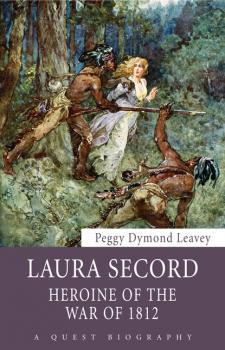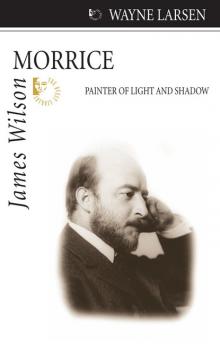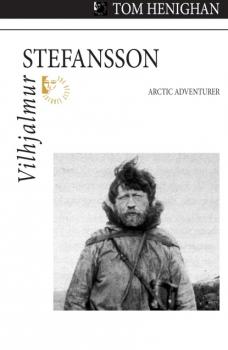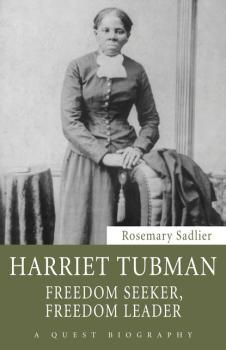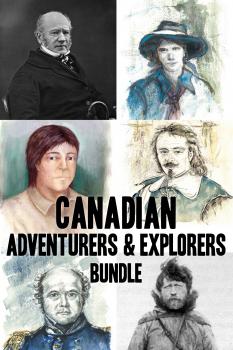ТОП просматриваемых книг сайта:
Quest Biography
Скачать книги из серии Quest BiographyАннотация
2013 Speaker’s Book Award – Shortlisted Laura Secord is now famous for her singular feat of bravery during the War of 1812, but did she warn the British and help defeat the American invaders as her legend says? After dragging her injured husband off the battlefield during the War of 1812, Laura Secord (1775-1868) was forced to house American soldiers for financial support while she nursed him back to health. It was during this time that she overheard the American plan to ambush British troops at Beaver Dams. Through an outstanding act of perseverance and courage in 1813, Laura walked an astonishing 30 kilometers from her home to a British outpost to warn Lieutenant James FitzGibbon. Despite facing rough terrain, the ever-present danger of being caught by American troops, and rather delicate encounters with Native forces, Laura reached FitzGibbon just in time for the British to prepare and execute an ambush on American military nearby, forcing the U.S. general to surrender. Laura lived a very long time, dying at the age of 93. In her lifetime the government never formally recognized her singular feat of bravery, and much controversy still envelopes her legacy.
Информация о книге
Автор произведения Peggy Dymond Leavey
Жанр Биографии и Мемуары
Серия Quest Biography
Аннотация
James Wilson Morrice (1865–1924) was a Canadian painter of extraordinary passion and simplicity whose canvases and oil sketches are valued throughout the world and cherished in Canada as our first real examples of modern art. Though cut short by chronic alcohol abuse, Morrice’s restless bohemian life was spent in constant motion. From the colourful canals of Venice to the sun-drenched markets of North Africa to the snowy streets of Quebec City, he was, as his friend Henri Matisse described him, «always over hill and dale, a little like a migrating bird but without any very fixed landing place.» In James Wilson Morrice, Wayne Larsen chronicles the creative but often troubled life of this early cultural icon as he travels in search of the colours, compositions, and subtle effects of light that would inspire a revolution in Canadian art.
Аннотация
Born in Manitoba of Icelandic parents, Vilhjalmur Stefansson (1879-1962) became one of Canada’s most famous and controversial Arctic explorers. After graduate studies in anthropology at Harvard University, Stefansson lived with and studied Inuit in the Mackenzie River Delta in the Northwest Territories in the winter of 1906-07. In two subsequent expeditions he completed a major anthropological survey of the Central and Western Arctic coasts and islands of North America; located and lived with the Copper Inuit, a previously unknown group of aboriginal people; and discovered the world’s last major land masses. During his third and final great Arctic expedition from 1913 to 1918, some of Stefansson’s men perished tragically, an outcome that severely damaged his reputation. Nevertheless, the hardy explorer contributed immensely to knowledge about the Far North, particularly in his championing of the «Friendly Arctic.» Part scientist, part showman, Vilhjalmur Stefansson was truly unique among polar adventurers.
Аннотация
Mary Pickford’s ambition, passion, innate talent, and savvy business acumen sent her career into the stratosphere and set the blueprint for the modern movie star. Born Gladys Louise Smith in 1892, Pickford was raised in a house on University Avenue in Toronto and began her acting career on the stage. However, her determination led her to the new world of motion pictures, where she not only revolutionized acting method but negotiated her own terms for the highest salary for any actress and complete creative control over her films – unheard of behaviour for a woman of that period. Pickford co-founded United Artists in 1919 with Douglas Fairbanks and Charlie Chaplin, which turned the existing studio system on its head. The actress’s subsequent marriage to Fairbanks incited a fan frenzy comparable to today’s obsession with couples like Brad Pitt and Angelina Jolie. Although Pickford’s star faded with the advent of talking pictures, she was the catalyst for the culture of Hollywood celebrity that enthralls us today.
Информация о книге
Автор произведения Peggy Dymond Leavey
Жанр Биографии и Мемуары
Серия Quest Biography
Аннотация
2013 Information Book Awards – Long-listed Harriet Tubman encouraged enslaved Africans to make the break for freedom and reinforced the potential of black freedom and independence. Born in the United States and enslaved as a child, Harriet Tubman (circa 1820-1913) is one of the best-known figures connected to the Underground Railroad. Through her knowledge and outdoor survival skills, honed through her unpaid labour in the fields and through the later connections she made in the abolitionist community, Tubman was well poised to command her followers. By her discipline and example, she never lost a «passenger.» Tubman’s exploits helped to empower those opposed to slavery and enrage those who supported it. Her success encouraged enslaved Africans to make the brave break for freedom and reinforced the belief held by abolitionists in the potential of black freedom and independence. Referred to as «General Tubman» due to her contributions to the Underground Railroad and to the Union Army, Tubman’s numerous rescue missions ending in Canada helped to build the interest in escape and reinforce the position of Canada as the final stop on the journey to freedom.
Информация о книге
Автор произведения Rosemary Sadlier
Жанр Биографии и Мемуары
Серия Quest Biography
Аннотация
During the American Revolution and the border conflicts that followed, Simon Girty’s name struck terror into the hearts of U.S. settlers in the Ohio Valley and the territory of Kentucky. Girty (1741-1818) had lived with the Natives most of his life. Scorned by his fellow white frontiersmen as an «Indian lover,» Girty became an Indian agent for the British. He accompanied Native raids against Americans, spied deep into enemy territory, and was influential in convincing the tribes to fight for the British. The Americans declared Girty an outlaw. In U.S. history books he is a villain even worse than Benedict Arnold. Yet in Canada, Girty is regarded as a Loyalist hero, and a historic plaque marks the site of his homestead on the Ontario side of the Detroit River. In Native history, Girty stands out as one of the few white men who championed their cause against American expansion. But was he truly the «White Savage» of legend, or a hero whose story was twisted by his foes?
Аннотация
René Lévesque entered provincial politics in 1960 when Jean Lesage persuaded him to join his Liberal dream team. In 1968 he founded the Parti Québécois (PQ). Under the PQ banner, Lévesque served as premier from 1976 to 1985.
Информация о книге
Автор произведения Marguerite Paulin
Жанр Биографии и Мемуары
Серия Quest Biography
Аннотация
Presenting six titles in the Quest Biography series that profiles prominent figures in Canada’s history. Canada is a vast land with many remote regions to be explored. Among the intrepid explorers who travelled the wilderness and mapped Canada’s geography are: the French founder of Quebec, Samuel de Champlain; surveyor David Thompson; doomed seeker of the Northwest Passage Sir John Franklin; Arctic explorer Vilhjamur Stefansson; legendary Upper Canada governor Sir George Simpson; and mountaineer Phyllis Munday. Their stories are detailed in these entertaining and informative biographies. Includes Samuel de Champlain John Franklin David Thompson Vilhjamur Stefansson George Simpson Phyllis Munday
Аннотация
Аннотация
As a child she was «contrary,»as a young woman she defied convention to choose art over marriage, and as a middle-aged woman she was considered a full-blown eccentric. Listening to her own inner voice, Emily Carr created an art unique to British Columbia.

